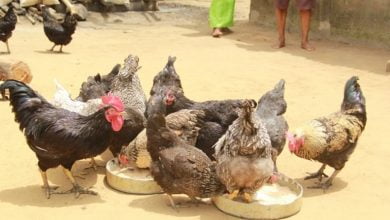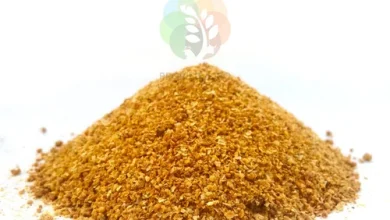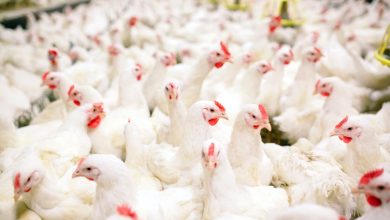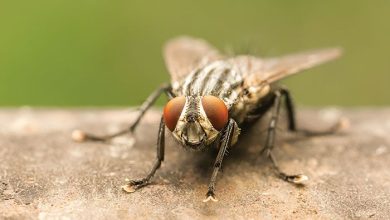PARAMETERS INFLUENCING EGG SHELL QUALITY
S R Prabakar
Kemin Industries South Asia Pvt. Ltd.
INTRODUCTION
Indian poultry industry produces about 90 billion eggs annually with an estimated yearly sectoral growth of 6%. The per capita egg consumption annually in India is around 70 eggs. However, the National Nutrition Institute recommends 180 eggs per person per year. Eggs are healthy food for human consumption. The egg quality standards are of utmost important. The major egg quality parameters are cleanliness, soundness, texture and shape of shell; relative viscosity and freedom from foreign materials in albumen; shape, firmness and freedom of defects in yolk. Egg shell plays a crucial role in protecting the contents of egg from microbial and physical contamination, and in controlling the exchange of moisture and gases with the external environment. In commercial layer and breeder operations, the shell quality parameters like shell thickness and breakage strength helps in increased saleable or hatching eggs resulting in high number of viable day-old chicks production. Defects in shell quality can cause substantial losses to a commercial egg producer.
FACTORS AFFECTING EGG SHELL QUALITY
- Role of Nutrients
Balancing the calcium and phosphorus in layer feed formulation is of utmost importance to maintain a better egg production and shell quality. A normal poultry egg contains almost two grams of calcium in their egg shell. To maintain a better egg shell quality, a daily dietary intake of four grams of calcium through the diet is essential. In general, 50-60% of dietary calcium is used for the egg shell formation. A normal layer ration containing 3.56 % or higher calcium level would ensure maintenance of 20-30mg/dl of calcium levels in their blood. When layer birds are fed with a calcium deficient diet (<2% dietary levels), the layer birds utilize 30-40% of its calcium from the bone for its normal egg shell formation.
Phosphorus absorption is optimal at a pH range of 5.5-6.0. The absorption of phosphorus decreases when pH is higher than 6.5. A high dietary calcium level increases the pH in gut leading to a reduced phosphorus absorption along with zinc and manganese. Correspondingly, a high plasma phosphorus level has a negative influence on the calcium absorption and mobilization. An increase free fatty acid levels in diet, decreases the pH and interferes with calcium and phosphorus absorption.
- Mycotoxins
Aflatoxin B1 and cyclopiazonic acid are the most common mycotoxins implicated in egg shell quality. Aflatoxins were found to reduce the calcium content in egg shell of laying hens. Whereas, cyclopiazonic acid produces a marked deterioration in egg shell quality in laying hens. T2 toxin and deoxynivalenol elicit oral lesions leading to lower feed intake resulting in reduced egg production and poor shell quality.
- Age of Birds
Calcium and phosphorus level must be maintained in feed of laying hens as per the age. Normal egg contains about 2g of calcium regardless of the laying hen’s age and egg weight. As the hen’s age advances, eggs will become larger with thinner shell. The absorption of calcium from intestine will also be reduced. As age advances, calcium level in feed should be increased. In phase-1 (0.5% hen day production to 40 weeks of age), 4.2g/day calcium and 0.44g/day available phosphorus must be provided. In phase-2 (above 41 weeks of age), 4.35g/day calcium and 0.42g/day available phosphorus must be provided.
- Physiological Changes
In early stage of laying period, the young layer birds commonly produce soft shelled eggs. This will be reduced with the maturity of reproductive system. Sometimes, stress or fright could also lead to the eggs laid without shell.
- Disease Condition
Diseases like infectious bronchitis (IB), new castle disease (ND) and avian influenza (AI) affects the egg shell quality. In IB, occurrence of misshapen eggs with thin, soft, rough and pale shells were observed. While in ND, occurrence of misshapen eggs, rough or thin shelled eggs and reduced egg production could be observed. Mycoplasma gallisepticum affects the bird’s respiratory tract, responsible for salpingitis, reduced egg production and poor egg quality. Whereas, Mycoplasma synoviae affects the oviduct of layers resulting in egg production with shell abnormalities like roughened shell surface, shell thinning and increased translucency on apical side leaving a clear demarcation zone. The proportion of affected eggs can be as high as 25% with susceptibility to breakage and cracking of eggs resulting in economic losses.
- Environmental Changes
Disturbance in the plasmatic acid-base balance results in soft shelled egg production. During exposure to warm environmental temperatures, hens reacts by increasing its rate of breathing to help cool itself. This physiological occurrence causes the lowering of CO2 in blood and produces a condition termed “respiratory alkalosis”. The pH of blood becomes alkaline reducing the availability of Ca++ needed for the formation of egg shell. This causes an increase in the production of soft-shelled eggs. Thus, egg shell quality is somewhat compromised during warm summer months.
- After forced moulting, the egg specific gravity, shell weight and shell thickness tend to improve or maintain same as prior to the forced moulting. Egg shell breaking strength is also improved in all strains of layer birds after forced moulting.
- Low dietary cationic-anionic balance, presence of non-starch polysaccharides (NSP) and mycotoxins results in poor egg shell quality.
- Old layer cages with rough edges and handling of eggs leads to egg breakage.
STEPS TO IMPROVE EGG SHELL QUALITY
- Trace Minerals
Trace minerals are essential in the biochemical processes necessary for growth and development, including bone and egg shell formation. Zinc plays a vital role in deposition of albumen and egg shell membranes production respectively in magnum and isthmus respectively. The carbonic anhydrase, a zinc dependent, stimulates calcium carbonate deposition for egg shell formation. Manganese is essential for egg shell formation and positively affect egg shell quality. Copper, an integral part of lysyl-oxidase enzyme is important in collagen formation present in egg shell membrane. In poultry nutrition, either inorganic or organic forms of trace minerals are commonly added as feed additives to diets in improving hen’s performance, production and quality of eggs. Compared to inorganic sources, organic mineral sources are reported to have several advantages including protection from undesired chemical reactions in gastrointestinal tract, easy passage intact through intestine wall and, possibly different absorption, metabolic pathway and mechanism.
- Calcium, Phosphorus and Vitamin-D3
Crystalline layer of egg shell consists of more than 90% calcium in the form of calcium carbonate. The dietary calcium (3.8- 4.2%) uptake, deposition and excretion are regulated by Vitamin D3 and its metabolites. Vitamin-D3 is absorbed from intestine in association with fats and it requires the presence of bile salts for absorption.
- Sodium Bicarbonate
Addition of sodium bicarbonate maintains the dietary electrolyte balance, thus positively influencing the egg shell quality through better calcium absorption. During summer, sodium bicarbonate must be added at the rate of 1kg per ton of feed to improve egg shell quality.
- Chromium and Vitamin-C
Chromium improves the productive performance in poultry due to its important functions in metabolism, growth and reduction of lipid and protein peroxidation. Glucose tolerance factor (GTF), the biologically active form of chromium potentiates the action of insulin and thereby regulating the carbohydrate metabolism. Under heat stress conditions, chromium plays a crucial role in poultry nutrition, production, health and enhances the quality of eggs. Ascorbic acid improves the poultry performance during stress conditions by lowering of plasma corticosterone level and adrenocorticotropic hormone. When ascorbic acid was used at 100mg/kg of feed or less for commercial layers, an improvement in egg production, egg shell quality and livability was observed. Thus, a combination of chromium and vitamin-C will be more beneficial to combat the heat stress with an improvement in production and shell quality.
MANAGEMENT
- Analyze the raw materials for multi-toxins before the usage.
- In old layers, increase in egg size leads to thinning of egg shell. Hence, feed formulation should be optimized to maintain standard egg size and avoid egg breakage.
- A proper vaccination for infectious bronchitis and new castle diseases must be followed to sustain egg shell quality.
- Mycoplasma prevention program should be followed in chicks, growers and layers.
- A practice of minimum two or more egg collection schedules daily should be followed to avoid piling of eggs and egg breakage.
CONCLUSION
Proper nutritional management by providing calcium and phosphorus as per the age of birds with optimal dosage of organic trace minerals in addition to Vitamin D3, is important to improve the egg shell quality. A better health management of birds with regular vaccination schedules and good farm management practices are vital to avoid egg shell quality related diseases problems. The improvement in egg shell quality parameters will avoid egg breakage losses ensuring a better return to the farmers.



